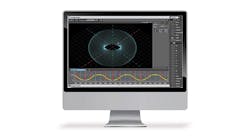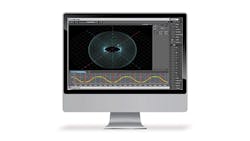Simulation software benefits from graphics and ease-of-use improvements
Thomas Kuckhoff is product manager—controllers at Omron Automation.
Tell us about your company’s state-of-the-art simulation-software technology.
Simulating machine performance is a big part of this, as the software simulates the entire system. In addition to PLC logic simulation to validate ladder logic, safety simulation ensures robustness of safety controls, HMI simulation solidifies strong user interfaces, and the 3D software also offers visual verification of overall performance.
Also read: Simulation sets the stage
This feature allows the importing of AutoCAD and SolidWorks files to create a rendering of the machine environment. Validating the program in safe environment, before machine build is complete, allows for full solution vetting prior to bringing programs to automation equipment. Furthermore, validating the entire system simultaneously on single software eliminates programming blind spots.
What have been the biggest improvements to simulation-software technology in the past five years?
Thomas Kuckhoff, product manager—controllers, Omron Automation: Graphics and ease of use. Omron’s engineering team has focused on user interface and graphic performance to give the software robust performance, regardless of the intricacies of the application.
How has simulation-software technology benefitted from remote connectivity and networking?
Thomas Kuckhoff, product manager—controllers, Omron Automation: Traditionally program troubleshooting and training interfere with critical operation processes, often requiring production to come to a halt to find the root problem. Troubleshooting and training team members on machine programs through a simulation environment can be accomplished without stopping machine operation to allow for troubleshooting to not interfere with production goals. This allows maintenance teams and production teams to work in parallel, which yields some great efficiencies.
Can you explain how improvements in simulation-software design and production have impacted industrial applications?
Thomas Kuckhoff, product manager—controllers, Omron Automation: 3D models are now the norm in the mechanical-engineering field. Combining these models in their current format, AutoCAD and SolidWorks, these models can become the bridge to join programmers and mechanical engineers, and, as we know, we all “get by with a little help from our friends.”
How do simulation-software technologies figure into digital-twin platform models being used by manufacturers?
Thomas Kuckhoff, product manager—controllers, Omron Automation: Simulation software is the beginning of the digital-twin platform. Being able to model the machine and its environment is the first step. The next is to integrate material properties and algorithms for predicting life of wearable components. While the digital-twin concept is cited heavily in publications, the first step is to ensure robust performance as many of the hurdles to production capacity is felt through system integration and start-ups.
When will simulation-software technology become IT-friendly enough that engineers/IT professionals are no longer required for installation and operation?
Of course, there is a focus on making simulations easier and simpler, but the applications that suit these simulations are commonly not the ones making the monumental leaps in production.
Machines making these leaps in performance often require the tools that can handle high amounts of computation and hardware, which can crunch the numbers with CPU availability for the next version.
The time we are comfortably able to say that the simulation software can be completed without engineers is the time we will be talking about the precision of digital-twin software.
What future innovations will impact the use of simulation-software technology in manufacturing operations?
Thomas Kuckhoff, product manager—controllers, Omron Automation: The integration of the industrial Internet of Things (IIoT) into the digital-twin algorithms. When algorithms begin to adapt based on particular application trends, the algorithm has the ability to generate the inertia to overcome the sheer amount of variables, which can affect the life of a machine. When the industrial Internet of Things becomes prevalent enough to start affecting the digital-twin life, machines can not only become predictive to their own lives, but can take action to extend their lives.
About the author: Mike Bacidore
Mike Bacidore is the editor in chief for Control Design magazine. He is an award-winning columnist, earning a Gold Regional Award and a Silver National Award from the American Society of Business Publication Editors. Email him at [email protected].







